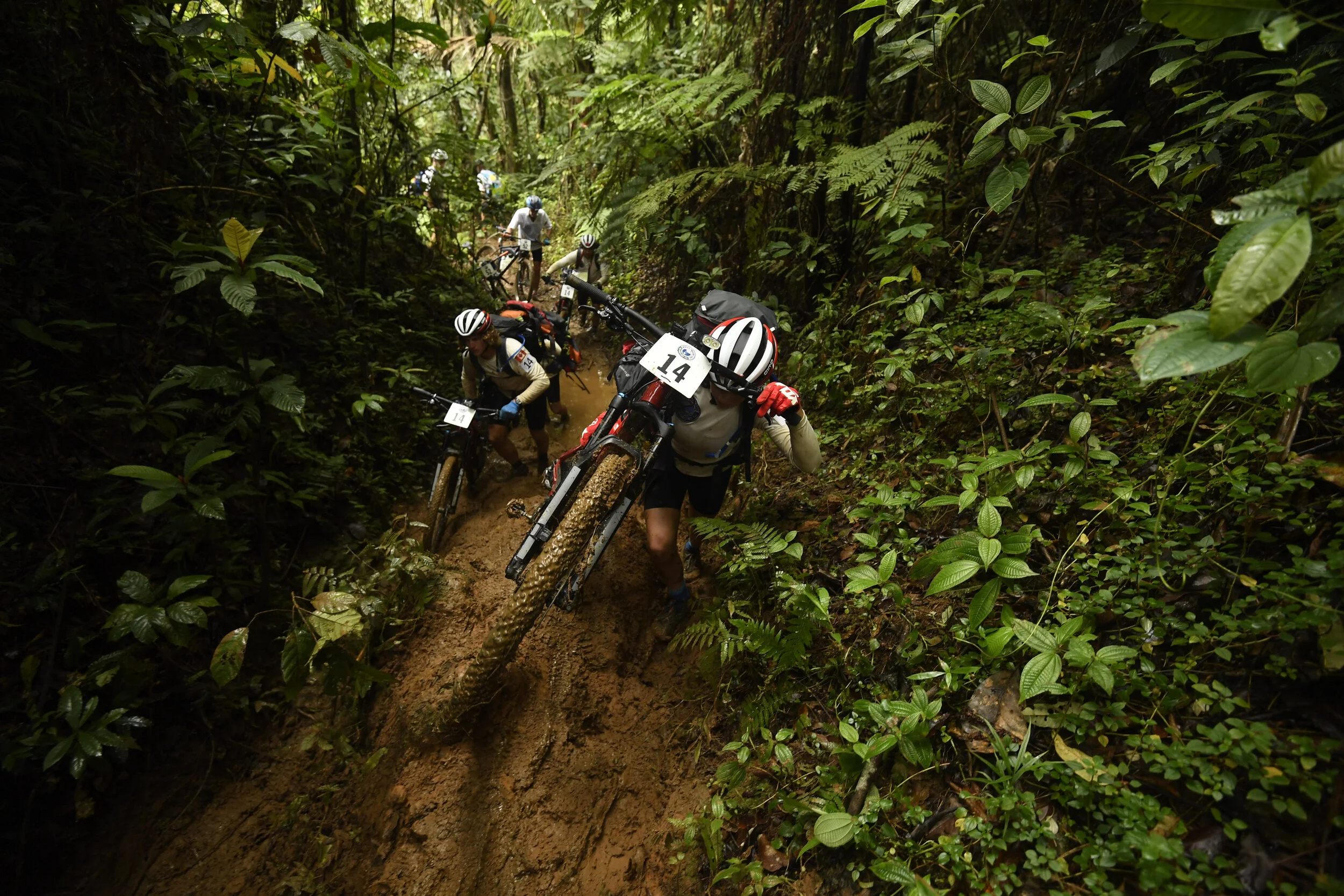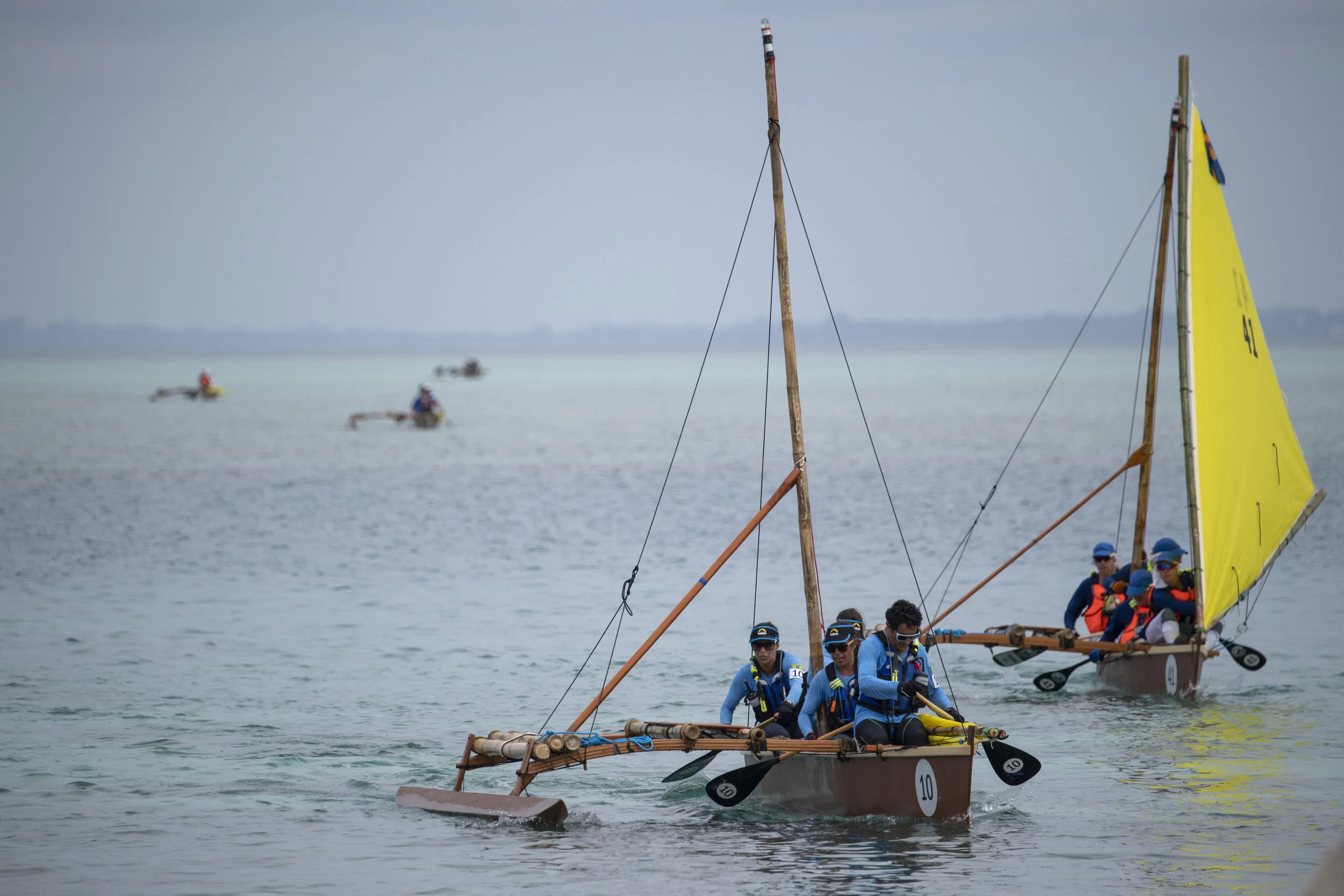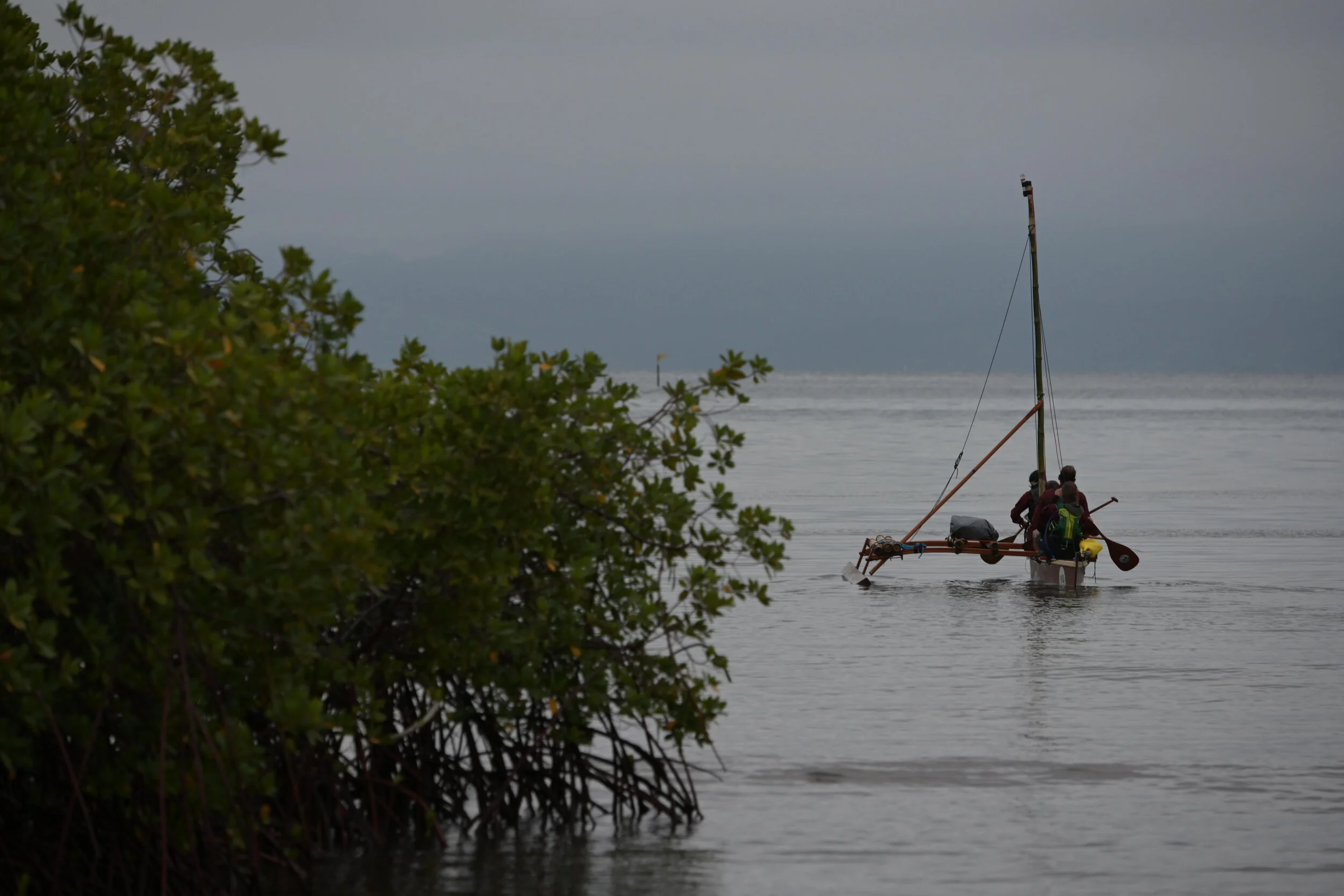Eco-Challenge Fiji 05 - 66th Place and Moving Up
Eco-Challenge Fiji:
World’s Toughest Race
Tuesday, September 10th
Spoilers: Team Eagle Scouts, Team Canyoneros
As they approached the open ocean, Team US Military put up their Camakau’s sail in an attempt to catch some wind. Unfortunately, the wind was extremely calm—very unusual as they would later find out. The team resorted to paddling and were making good time. For their efforts, they passed another six or seven teams on the way to the first CP.
Team 29 sailing their Camakau on a calm Pacific Ocean
At CP1, Caitlin stayed with the boat as the guys went to check the passport and refill water. Seeing their crude patch job on the Camakau, the camera crew came up and interviewed Caitlin about what had happened. As she was relaying the story, another team coming in to the CP actually hit the newly-repaired boat again! Even though there was no new damage, Caitlin was pissed about it. Team US Military got out of there quickly to avoid any other mishaps with teams and set off for the second CP on an island further north.
As the military team approached CP2, they realized they were going to have to leave the boat in the water as they trekked at night onshore. The wood the villagers had provided was not exactly Home Depot quality, and there was a concern the water would soak through the patch job and rotting wood while the team was ashore. Caitlin also noticed that the expedition guidebook had labeled CP2 with possible boat repair, but Joshua was worried that the repair might make the boat worse, “If it ain’t broke. Don’t fix it.”
Caitlin also noticed that the expedition guidebook had labeled CP2 with possible boat repair, but Joshua was worried that the repair might make the boat worse, “If it ain’t broke. Don’t fix it.”
As Team US Military pulled up, the Eco-Challenge Fiji ocean leg team took us to shore and said, “Team 64? We have been waiting for you. We will repair your boat." It seemed like they knew what they were doing, so the hesitant team acquiesced, praying that they would do an adequate repair job.
Skin diving for the first Eco-Challenge medallion.
Night was falling as they started the trek in 55th place. With all four members of the team having come from running backgrounds, they set off on a fairly robust pace. They first passed Team Eagle Scouts—a very young team who had never done an adventure race before. While the older, more experienced members of Team US Military had not given the younger competitors a chance initially, Team Eagle Scouts had out-sailed the military team into the previous CP. They would prove to be steady throughout the race and finish second to last. The military team pushed forward and next passed Team Canyoneros—a group from Florida against whom they had raced in the states. They also would be steady and would end up as the last official team to finish.
Trekking in the middle of the night, the team was greeted with “Bulas!" everywhere they went. The villagers were out and cheering teams on despite the very late hour. Mark Burnett drove by, flashing the team the ok sign. Caitlin gave him a high five as she passed by and continued on in high spirits.
The gathering storm clouds on the horizon.
As they approached the next CP, Team US Military arrived alongside Team Endure, consisting of former Eco-Challenge champion Danelle Ballengee and ultramarathoner Travis Macy. Team US Military, who had three proficient navigators, spent a few minutes studying the map. The next CP looked difficult, and they were trying to decide how to attack it. The villagers indicated the right direction where there was a trail down the way. They took the trail and sure enough, glow sticks were lighting the entrance to the attack point of the CP. Team members were a little put off by the all but neon signs indicating the way, but the navigation would not prove as easy in the subsequent stages of the race.
Team members were a little put off by the all but neon signs indicating the way, but the navigation would not prove as easy in the subsequent stages of the race.
Team US Military made their way up the incline to the top of the ridge. The hike was fairly steep and difficult, but they were rewarded with a beautiful view of the ocean from the top. A team was sleeping at the CP in the grassy clearing on top, but being the first night, it was way too early for Team US Military to think about sleep. Instead, they took a short break and then embarked on the hike back down to the water. After reaching the water, they quickly refueled before getting back into their Camakau.
Caitlin Thorn is a guest blogger here. Caitlin Thorn is an accomplished endurance athlete, with numerous accolades as a distance runner, Olympic and half-Ironman distance triathlete, and adventure racer. Caitlin is a Track and Field Division I NCAA All-American, with numerous finishes in the half-marathon and marathon distances. She has been adventure racing for three years and has earned podium finishes at over 6 races and qualified for the 2019 USARA National Championship. Caitlin enjoys world travel and hiking, and when not pursuing outdoor adventure she serves as an active duty officer and engineer in the U.S. Air Force.
Caitlin can be followed via Facebook @caitlin.aub
















Eco-Challenge Fiji never promised to be an adventure race. Its claim was “The World’s Toughest Race”. Despite the lack of navigational challenges and jungle whacking (which was anticipated to be the hardest part of the race), Eco-Challenge Fiji was still the hardest race the members of Team US Military had ever done. The biking was tough, with incredible elevation gains and losses, and the weather added to the suck factor. This course tested the limits of racers’ mental capacity and their will to finish. Traveling across and along rocky rivers was tedious and broke some of the hardest people down. Continually slipping on rocks and banging up shins and feet tested the bounds of human fortitude and willpower.